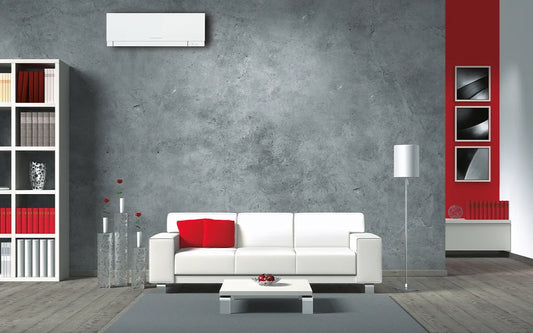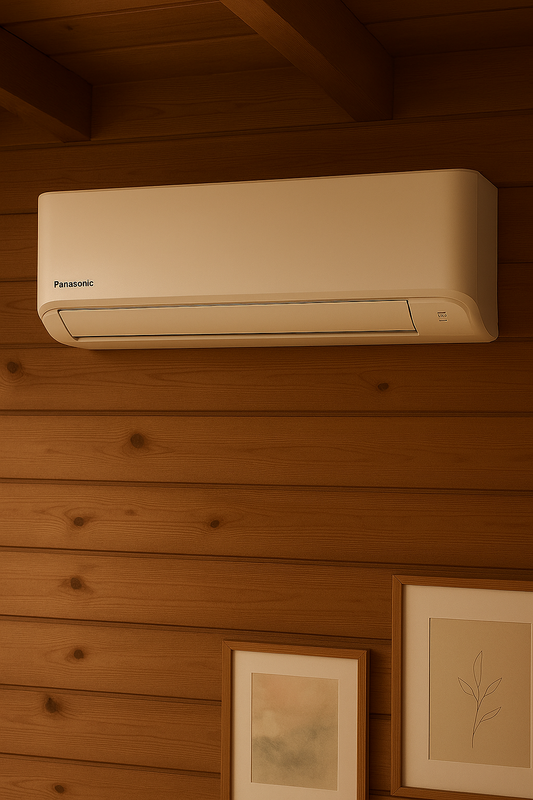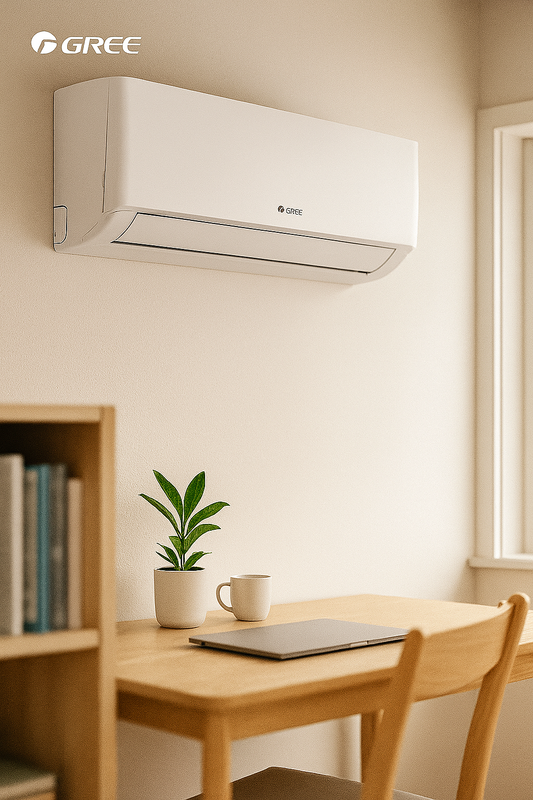Installera Luft Vatten Värmepump Pris: En Guide
Inledning
Att installera en luft-vatten värmepump kan vara en kostnadseffektiv och miljövänlig lösning för uppvärmning av hemmet. I denna artikel kommer vi att utforska processen för installation av en luft-vatten värmepump och dess relaterade kostnader.
Definition och Bakgrund
En luft-vatten värmepump är en typ av värmepump som använder utomhusluft som energikälla för att värma upp vatten som sedan används för uppvärmning av bostäder. Genom att utnyttja den omgivande luften kan värmepumpen producera värme även vid låga utomhustemperaturer. Denna teknik har blivit alltmer populär på grund av dess energieffektivitet och minskade miljöpåverkan jämfört med traditionella värmesystem.
Fördelar och Användningsområden
En av de främsta fördelarna med att installera en luft-vatten värmepump är dess potential att minska uppvärmningskostnaderna på lång sikt. Genom att dra nytta av den omgivande luften som energikälla kan värmepumpen generera betydande energibesparingar för hushållen. Dessutom kan luft-vatten värmepumpar även användas för att producera varmt vatten för hushållsändamål, vilket ytterligare ökar deras mångsidighet och värde.
Relaterade Tekniker, Begrepp eller Variationer
Det finns flera olika typer av värmepumpar, varav luft-vatten värmepumpar är en. Andra vanliga typer inkluderar luft-luft värmepumpar och bergvärmepumpar. Var och en av dessa tekniker har sina egna fördelar och användningsområden, och det är viktigt att överväga vilken typ som passar bäst för en specifik fastighet beroende på faktorer som klimat, tillgänglig utrymme och budget.
Vanliga Frågor (FAQ)
-
Vad är den genomsnittliga kostnaden för att installera en luft-vatten värmepump?
Kostnaden för installationen kan variera beroende på faktorer som fastighetens storlek, befintligt värmesystem och geografisk plats. Generellt sett kan kostnaden för installationen av en luft-vatten värmepump variera mellan 70 000 och 150 000 kronor. -
Hur lång tid tar det att installera en luft-vatten värmepump?
Tiden för installationen kan variera beroende på komplexiteten i projektet och andra faktorer. Vanligtvis kan installationen ta mellan två till fem dagar. -
Vilka underhållskrav finns det för en luft-vatten värmepump?
För att säkerställa optimal prestanda och livslängd för värmepumpen rekommenderas regelbunden underhåll av auktoriserade tekniker. Detta kan inkludera rengöring av filter, kontroll av kylmediumnivåer och inspektion av komponenter.
Sammanfattning
Installation av en luft-vatten värmepump kan erbjuda betydande fördelar för hushåll, inklusive energibesparingar och minskad miljöpåverkan. Genom att förstå kostnaderna och processen för installationen kan fastighetsägare fatta informerade beslut när de överväger att integrera denna effektiva uppvärmningsteknik i sina hem.
Installation Process
The installation process for a air-to-water heat pump typically involves several key steps. First, a site survey is conducted to assess the property and determine the best location for the outdoor unit. Next, the necessary indoor components, such as the heat exchanger and control unit, are installed. Piping and electrical connections are then established to ensure proper functionality. Finally, the system is tested to verify its performance and efficiency.
Cost Considerations
When considering the cost of installing an air-to-water heat pump, it's important to factor in not only the initial installation expenses, but also the long-term savings on energy bills. Additionally, potential rebates, incentives, and financing options offered by government programs or utility companies may help offset the upfront investment. Understanding the total cost of ownership can provide a comprehensive view of the financial implications of this heating solution.
Energy Efficiency and Environmental Impact
One of the primary advantages of air-to-water heat pumps is their high level of energy efficiency. By harnessing ambient air as a renewable energy source, these systems can significantly reduce greenhouse gas emissions and reliance on fossil fuels for heating. This not only benefits homeowners in terms of lower carbon footprint, but also contributes to broader environmental conservation efforts.
Case Study: Residential Installation
To illustrate the practical implementation of air-to-water heat pump installation, consider the case of a typical residential property. In this scenario, the homeowner decides to switch from a conventional heating system to an air-to-water heat pump. By evaluating the specific requirements of the household and working closely with a qualified installer, the transition is seamlessly executed, resulting in enhanced comfort and cost savings.
Regulatory Compliance and Standards
When installing an air-to-water heat pump, it's essential to adhere to relevant building codes, regulations, and industry standards to ensure safety and performance. Compliance with these guidelines not only guarantees the proper functioning of the system, but also provides assurance of its reliability and longevity. Working with licensed professionals and reputable suppliers is crucial in meeting these compliance requirements.
Installation Cost Breakdown
Understanding the specific components of the installation cost can provide valuable insights for homeowners. These may include the price of the heat pump unit itself, labor costs for installation, any required modifications to the existing heating system, and additional expenses such as permits and inspections. By evaluating these individual expenses, property owners can make informed decisions regarding their investment in a air-to-water heat pump.
Efficiency Optimization and Performance Monitoring
Once a air-to-water heat pump is installed, optimizing its efficiency and monitoring its performance are essential for long-term benefits. This may involve regular maintenance, adjusting settings for seasonal variations, and utilizing smart technology for remote monitoring and control. By actively managing the system's performance, homeowners can maximize energy savings and prolong the lifespan of their heating solution.
Industry Trends and Innovations
The field of air-to-water heat pumps is continually evolving, with ongoing advancements in technology and design. Emerging trends may include increased integration with renewable energy sources, enhanced energy storage capabilities, and improved system intelligence for adaptive operation. Staying informed about these developments can help homeowners remain at the forefront of efficient heating solutions.
Comparative Analysis: Air-to-Water vs. Other Heat Pump Systems
Comparing air-to-water heat pumps with alternative heating systems, such as air-to-air heat pumps or geothermal heat pumps, can provide valuable context for decision-making. Evaluating factors such as installation complexity, operating efficiency, and long-term maintenance requirements can assist property owners in selecting the most suitable heating solution for their specific needs and circumstances.
Environmental Considerations and Climate Impact
When assessing the environmental benefits of air-to-water heat pumps, it's important to consider their impact in various climate conditions. From cold northern regions to temperate coastal areas, the effectiveness of these systems may vary. Understanding the ecological implications of deploying air-to-water heat pumps in different settings can inform sustainable choices for residential heating.
Conclusion
By delving into the intricacies of installing a air-to-water heat pump, from cost breakdowns to industry trends, homeowners can gain a comprehensive understanding of this heating technology. With careful consideration of efficiency optimization, environmental impact, and comparative analysis, property owners can make informed decisions to enhance their living spaces with sustainable and cost-effective heating solutions.


